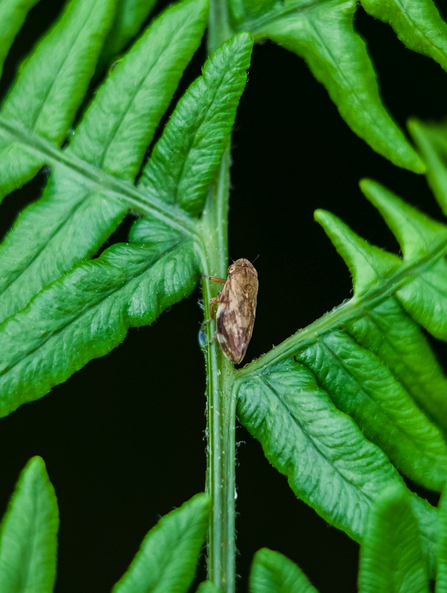To put into perspective just how impressive the froghopper’s hop is, it is equivalent to a human jumping around 200 meters! The froghopper takes off with such velocity that exerts a force that is 400 times its own body weight (G-Force 400). In comparison, an astronaut rocketing into orbit experiences a G-force of around five. Such amazing force is possible due to the common froghopper's powerful hind legs. The common froghopper developed this jump as a defence mechanism to evade predators.
The tiny adult common froghopper is variable in pattern from black and white to many shades of brown; the nymph (name for young invertebrates) is green and lives in 'cuckoo-spit' - a frothy mass found on grass and plant stems. This frothy mass has given the froghopper the other name of ‘spittlebug’ and can be seen all over plant stems in spring and summer and is far more commonly seen than the common froghopper.


